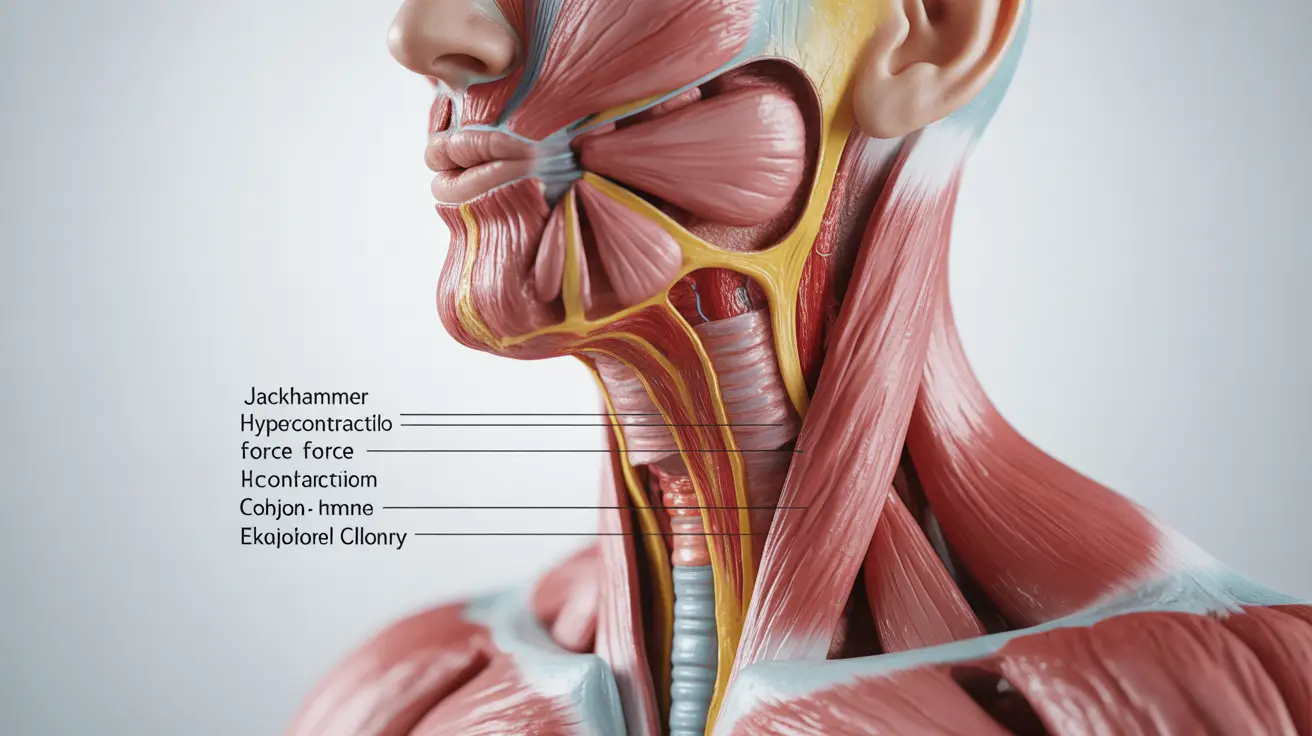Jackhammer esophagus, also known as hypercontractile esophagus, is a rare but significant swallowing disorder that affects the way food moves through your esophagus. This condition occurs when the muscles in your esophagus contract with excessive force, making it difficult and sometimes painful to swallow food and liquids.
Understanding this condition is crucial for those affected, as its symptoms can significantly impact quality of life. While relatively uncommon, proper diagnosis and management can help individuals better cope with and control their symptoms.
What is Jackhammer Esophagus?
Jackhammer esophagus is characterized by abnormally strong muscle contractions in the esophagus, the tube that carries food from your mouth to your stomach. These intense contractions can be up to three times stronger than normal, leading to difficulty swallowing and chest pain.
The condition gets its name from the powerful, repetitive contractions that resemble the motion of a jackhammer when viewed on diagnostic tests. These contractions can occur multiple times during a single swallow, making eating and drinking challenging.
Common Symptoms and Warning Signs
The symptoms of jackhammer esophagus can vary in intensity and frequency among individuals. Common signs include:
- Difficulty swallowing (dysphagia)
- Chest pain, especially while eating
- Food getting stuck in the esophagus
- Regurgitation of food
- Heartburn
- Painful swallowing (odynophagia)
Diagnosis Process
Diagnosing jackhammer esophagus requires specific testing to evaluate esophageal function. The primary diagnostic tools include:
High-Resolution Manometry
This is the gold standard test for diagnosing jackhammer esophagus. It measures the pressure and timing of muscle contractions in your esophagus while you swallow.
Additional Testing
Other tests may include:
- Endoscopy to examine the esophagus lining
- Barium swallow study to visualize swallowing function
- pH monitoring to rule out acid reflux
Treatment Approaches
Treatment for jackhammer esophagus typically involves a combination of approaches:
Medications
Several medications can help manage symptoms:
- Smooth muscle relaxants
- Calcium channel blockers
- Antianxiety medications when stress is a trigger
- Acid-reducing medications if needed
Procedural Interventions
In more severe cases, procedures may be recommended:
- Botox injections into the esophagus
- Pneumatic dilation
- Surgical intervention in rare cases
Lifestyle and Dietary Management
Making certain lifestyle modifications can help reduce symptom frequency and severity:
- Eating smaller, more frequent meals
- Avoiding trigger foods
- Chewing food thoroughly
- Staying upright after meals
- Stress management techniques
- Avoiding late-night eating
Frequently Asked Questions
What are the most common symptoms of jackhammer esophagus and how can I recognize them? The most common symptoms include difficulty swallowing, chest pain during eating, food getting stuck in the throat, and regurgitation. These symptoms often occur during or immediately after eating.
How is jackhammer esophagus diagnosed and what tests are involved? The primary diagnostic tool is high-resolution manometry, which measures esophageal muscle contractions. Additional tests may include endoscopy, barium swallow studies, and pH monitoring to rule out other conditions.
What treatment options are available to manage jackhammer esophagus symptoms? Treatment options include medications like muscle relaxants and calcium channel blockers, Botox injections, and in some cases, surgical intervention. The approach is typically tailored to symptom severity and individual response to treatment.
Can lifestyle changes or diet help reduce symptoms of jackhammer esophagus? Yes, lifestyle modifications can help manage symptoms. These include eating smaller meals, avoiding trigger foods, proper chewing, maintaining an upright position after eating, and stress management techniques.
What is the difference between jackhammer esophagus and other esophageal motility disorders like achalasia or diffuse esophageal spasm? Jackhammer esophagus is characterized by abnormally strong contractions, while achalasia involves failure of the lower esophageal sphincter to relax. Diffuse esophageal spasm features uncoordinated contractions rather than the hypercontractile pattern seen in jackhammer esophagus.




